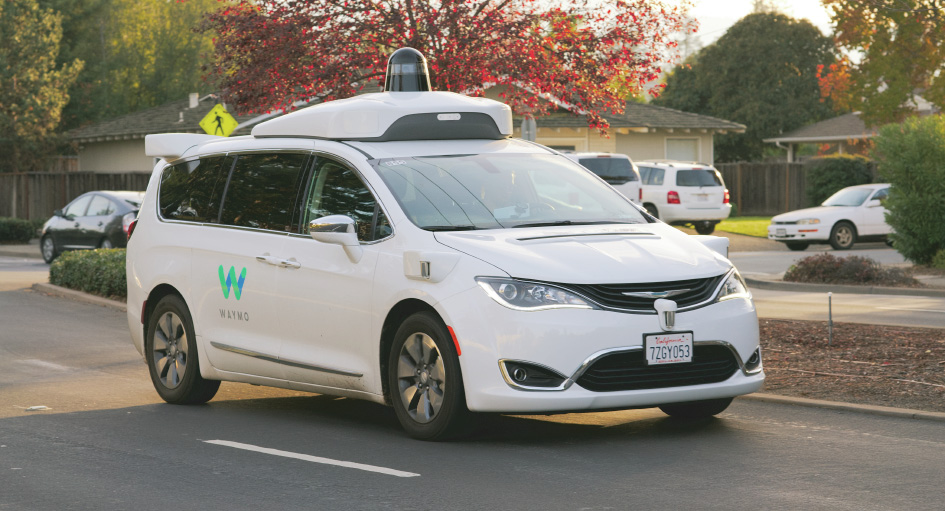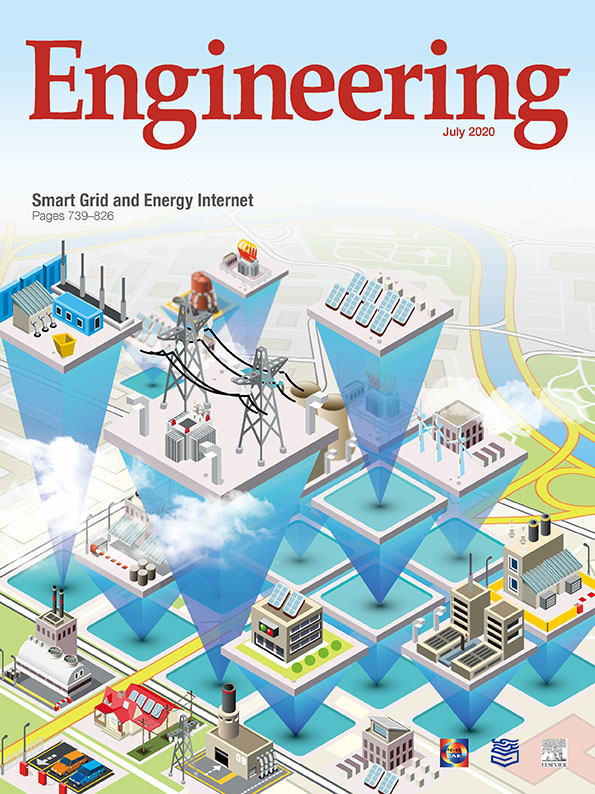Since the introduction of 1G wireless networks in the late 1970s, a new generation of wireless network technology has appeared approximately every ten years [1]. Now, companies have started implementing 5G, the latest generation of wireless technology [2,3]. Earlier transitions to next generation networks boosted cellular communications, mostly by speeding up service and increasing bandwidth. The jump from 4G to 5G promises to bring much more. While 5G will also greatly improve mobile broadband service, it will additionally provide a key platform for cutting-edge applications that go way beyond "smarter” smart phones.
"5G is profoundly new,” said Jacques Rudell at the University of Washington in Seattle, an associate professor of electrical and computer engineering who works on designing microelectronics for applications such as wireless networks. "It is so much more comprehensive than past generations.”
While past wireless generations mostly managed connections between individual devices and a central network, 5G will allow large numbers of devices to connect to and communicate with each other. This device-to-device communication will be necessary to realize future technologies like autonomous vehicles and "smart cities.” These and potentially many other powerful applications will depend on 5G. But for 5G to reach its full potential, some challenges—not all of them technical—still need to be addressed.
The primary remaining obstacles for self-driving cars, Rudell said, are not 5G technology challenges. Many policy decisions will need to be made before self-driving cars are widely used. But technologies for some 5G applications, such as those that employ higher frequency radio waves not previously used by wireless networks, are still being developed. According to a report issued by the Global System for Mobile Communications Association (GSMA), an industry organization that represents mobile network operators, 5G technologies may contribute 2.2 trillion USD to the world’s economy between 2024 and 2034, especially in the manufacturing and utilities sectors and in professional and financial services [4].
The International Telecommunication Union (ITU), a United Nations agency tasked with coordinating global telecommunication operations and services, has defined standards for what capabilities 5G should have in terms of three major use cases [5]. The first—and the focus for most consumers and mobile phone marketers—is enhanced mobile broadband. According to the ITU, peak data rates for 5G mobile broadband should be as high as 10 Gb·s-1 for uploads and 20 Gb·s-1 for downloads [5]. This is several hundred times faster than typical 4G speeds on smartphones now; downloading a movie would take seconds rather than minutes [1].
The second use case is ultra-reliable and low-latency communications (URLLC). Per the ITU, 5G should be capable of communications with a latency—or lag time in the response of one device to another—of less than 1 × 10-3 s [5]. This speed of response is needed, for example, for autonomous vehicles (Fig. 1). To ensure safe driving, such vehicles would need to coordinate with one another with a very short lag time in their communications, Rudell said.
《Fig. 1》

Fig. 1. The safe use of autonomous vehicles, like this Waymo (Mountain View, CA, USA) Chrysler Pacific Hybrid minivan undergoing testing in Los Altos, CA, USA, will depend on the very short latency (< 1 × 10-3 s) device-to-device communication enabled by 5G networks, which will make coordination between such driverless vehicles possible. Credit: Dllu, Wikimedia Commons (CC BY-SA 4.0).
The third use case is massive machine-type communication (mMTC). The ITU states that 5G networks should be able to maintain connections among a high density of devices—as many as one million devices or more per square kilometer [5]. Applications of this capability would include "smart cities,” in which wirelessenabled "Internet-of-Things” devices throughout an urban area collect information that can be used to optimize the use of resources in near real-time (Fig. 2). "You can think of it as basically embedding electronics into the environment on a large scale,” said professor of electrical and computer engineering Danijela Cabric at the University of California, Los Angeles, who specializes in wireless communications systems and networks. In addition to overcoming potential privacy issues, a challenge here will be designing free-standing devices that draw as little power as possible, since constantly changing batteries in a large number of devices may prove impractical.
《Fig. 2》

Fig. 2. Located in the Pearl River Delta and part of the Guangdong Province in southern China, the district of Nansha is linked by highways, trains, and boats to the close-by cities of Guangzhou, Shenzhen, Hong Kong, and Macau. The district, much of it already built, represents a new urban development model for an environmentally sound, "smart city” that will depend on 5G networks to optimize its efficiency, sustainability, and "livability.” Credit: Wikimedia Commons (CC BY-SA 3.0 DE).
To achieve its anticipated high speeds, 5G will operate at higher frequencies of radio waves than previous generations [1,6]. Wireless communications transfer information primarily through radio waves, which extend from frequencies of 3 kHz to 300 GHz, or wavelengths of 1 mm to about 100 km [7,8]. However, mobile networks so far have mostly kept to a small part of that range, using frequencies of about one or a few gigahertz, Rudell said. This is because lower frequencies—and thus longer wavelengths—of radio waves would require much larger electronics, making them impractical for mobile networks. Higher frequencies, on the other hand, suffer from transmission or path loss [9,10]. Electromagnetic waves lose power density when they travel from a transmitting antenna to a receiving antenna, and this effect increases at higher frequencies. For mobile networks, using frequencies of about one to a few gigahertz is a good compromise: The frequencies are high enough that the electronics of transmitters and receivers can be compact but low enough that the path loss is manageable.
5G will use higher frequencies, including some that are several tens of gigahertz, in the millimeter wave range of the electromagnetic spectrum [1,11]. To mitigate the path loss, 5G networks will use millimeter wave beamforming, which overcomes path loss by employing arrays of antennas to reinforce signals through constructive interference, Rudell said.
In addition to increased speed, another benefit of using higher frequencies is that 5G avoids the crowded part of the spectrum below 5 GHz. However, these higher frequencies have also brought 5G proponents into conflict with other users of those radio waves, especially ones in the 24 GHz band [11,12]. Meteorologists have voiced concerns that parts of the spectrum that mobile service companies plan to use—24.25–24.45 GHz and 24.75–25.25 GHz— are uncomfortably close to a vital radio frequency used to track and predict weather patterns. Water vapor in the atmosphere emits faint radiation at a frequency of 23.8 GHz, and meteorologists use satellite measurements of this radiation in their models to forecast weather and predict potentially dangerous storms. Large numbers of devices on Earth emitting radio waves near this frequency might drown out the faint signal of water vapor, preventing meteorologists from accurately forecasting weather [11,12].
This potential problem was on the agenda last November when the ITU convened its 2019 World Radiocommunication Conference in Sharm el-Sheikh, Egypt [13,14]. There, delegates voted to impose a noise limit of –33 decibel watts (dBW) on how much radiation the base stations of wireless networks are permitted to emit in the 24 GHz band. For base stations that will be installed after 1 September 2027, the limit will decrease to –39 dBW [15]. It remains to be seen whether these limits will suffice to eliminate the possible interference with water vapor problem—both are less strict than the –55 dBW the World Meteorological Organization had recommended to avoid interfering with weather satellite observations [12].
In any case, the transition to 5G networks has started. "Enhanced mobile broadband access is happening already,” Cabric said. As of February 2020, cities in at least 34 countries have deployed some 5G (Fig. 3) [4,16]. According to the GSMA March 2020 report, 5G may account for about 20% of the world’s network connections by 2025 [4], although it is possible that the coronavirus disease 2019 pandemic may delay deployment timelines [17,18]. And the additional 5G capabilities for URLLC and mMTC will likely need more buy-in from industry and consumers before they are tapped to any great extent, Cabric said. "I feel that some of the delays will come not from the technology being so impossible to implement, but more from when people accept it—people meaning stakeholders who would say, ‘OK, I want to deploy this service based on 5G.’”
《Fig. 3》

Fig. 3. The transition to 5G networks has started; as of February 2020, cities in at least 34 countries have deployed some 5G [4], including this August 2019 5G upgrade (3.5 GHz, Band n78) on a cell tower in Karlsruhe, Germany. Credit: Tomas Freres, Wikimedia Commons (CC BY-SA 4.0).













 京公网安备 11010502051620号
京公网安备 11010502051620号




